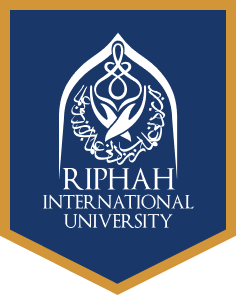Indium is a post-transition metal that has gained prominence in various industries due to its unique properties. Among its several forms, IN999 stands out as a high-purity indium product used primarily in electronics and specialized applications. The production of IN999 involves several intricate processes, particularly the refining of indium to eliminate contaminants that can affect its performance. This article delves into the processes involved in the production of in 999, highlights the importance of purity in indium products, and explores the challenges faced during the refinement process.
Understanding Indium and Its Significance
Indium is a soft, malleable metal with a silvery-white appearance. It was discovered relatively recently in 1863 and has since found extensive use across various sectors, including electronics, solar panels, and even pharmaceuticals.

The Role of Indium in Modern Technology
The modern technological landscape relies heavily on indium for its ability to act as a semiconductor. Its application is especially prevalent in the manufacturing of liquid crystal displays (LCDs), touchscreens, and thin-film solar cells. Indium tin oxide (ITO) is a widely used transparent conductive material that owes its effectiveness to indium’s intrinsic properties.
Properties of Indium
Indium has several characteristics that make it desirable for industrial applications. It has a low melting point, good thermal conductivity, and excellent resistance to corrosion. Furthermore, its non-toxic nature makes it a preferable choice over other metals like lead. These attributes enhance the quality and reliability of products manufactured using indium.
Applications of IN999
IN999 is often employed in applications where high purity is paramount. Its primary uses include soldering materials in electronic components, coatings in photovoltaic cells, and as an alloying agent. The stringent demands for pure indium underscore the need for effective refining methods to ensure that contaminants are minimized or entirely removed from the final product.
See more: in 999 login
The Refining Process of Indium
Refining indium to produce IN999 is a complex process involving multiple stages, each designed to maximize purity while removing undesirable elements. This section will explore the various techniques used in the refining process and their significance.

Initial Extraction Methods
Before refining can take place, indium must first be extracted from its ore. The two primary sources of indium are zinc ores and tin ores.
Mining and Ore Processing
The extraction begins with mining, wherein zinc or tin ores containing indium are sourced from mines. These ores undergo crushing and grinding to liberate the indium-bearing minerals. Afterward, physical separation techniques such as flotation may be employed to concentrate the indium-containing minerals before they are subjected to chemical processing.
Leaching and Concentration
Leaching is a critical step that involves dissolving the valuable metals from the ore using acidic or alkaline solutions. This method efficiently extracts indium but also requires further concentration to ensure that impurities are minimized. The concentrated solution then undergoes additional purification steps to isolate indium from other metals and contaminants present.
Pyrometallurgical Refining Techniques
Once the indium is concentrated, pyrometallurgical methods come into play. These high-temperature processes are crucial in ensuring that indium reaches the desired purity levels.
Smelting
Smelting is a traditional technique where concentrated indium is heated at high temperatures to separate it from other metal impurities. By carefully controlling the temperature and atmosphere, the smelting process allows the indium to liquefy while enabling lighter impurities to evaporate.
Distillation
Distillation serves as another effective means of refining indium. This technique entails heating the indium to its boiling point so that it vaporizes while leaving behind heavier and less volatile contaminants. The vaporized indium is then collected and condensed back into liquid form, resulting in a higher purity level.
Hydrometallurgical Processes
Hydrometallurgical techniques play a complementary role in the refining of indium, particularly when it comes to achieving ultra-high purity requirements.
Solvent Extraction
Solvent extraction is a liquid-liquid separation method that selectively removes impurities from the indium solution. Specific organic solvents are used to bind with the contaminants, allowing for their separation from the target indium.
Ion Exchange
Ion exchange is another effective hydrometallurgical method where ions in the solution are swapped for more desirable ions in a resin. This approach helps to further purify the indium by eliminating trace contaminants that might remain after other processes.
Challenges in Producing High-Purity Indium
While the technologies available for refining indium are sophisticated, several challenges accompany the production of IN999. Understanding these challenges is essential for maintaining quality standards.
Contaminant Identification and Management
One of the main challenges in producing high-purity indium is identifying and managing the various contaminants present in ores.
Common Contaminants
Contaminants could include copper, lead, gallium, and other trace metals. Each of these elements’ presence can drastically affect the properties of IN999, leading to subpar performance in applications.
Advanced Analytical Techniques
To combat this challenge, advanced analytical methods such as mass spectrometry and atomic absorption spectroscopy are utilized. These techniques allow manufacturers to monitor the impurity levels throughout the refining process rigorously.
Cost Implications of Refining Techniques
The complexity of refining indium often results in increased costs associated with the production of IN999.
Equipment and Technology Investment
Investing in state-of-the-art equipment and technology necessary for effective refining processes can be significant. Manufacturers must balance the need for high quality against the financial implications of employing several costly techniques.
Economic Viability
As demand for high-purity indium rises, the economic viability of producing IN999 becomes a critical consideration. Companies must evaluate market trends and consumer needs to ensure that they remain competitive without compromising on quality.
Environmental Concerns
The environmental impact of indium refining cannot be overlooked.
Waste Management
The refining processes generate waste materials that can be harmful if not managed appropriately. Responsible disposal of hazardous waste while adhering to regulatory requirements is vital for environmentally sustainable practices.
Carbon Footprint
Furthermore, high-energy-consuming processes contribute to the carbon footprint of indium production. Industry players are increasingly looking for greener alternatives and methods to reduce energy consumption throughout the refining process.
FAQs
What is IN999?
IN999 is a high-purity form of indium used mainly in electronic components, soldering materials, and specialized applications. It is known for its exceptional quality and minimal contaminants.
How is indium typically refined?
Indium is refined through a combination of pyrometallurgical and hydrometallurgical techniques, including smelting, distillation, solvent extraction, and ion exchange, to achieve high purity levels.
Why is the purity of indium important?
The purity of indium is critical because contaminants can adversely affect its performance in applications, particularly in electronics, where even trace amounts of impurities can lead to failures and reduced efficiency.
What are some common contaminants found in indium?
Common contaminants found in indium include copper, lead, gallium, arsenic, and other trace metals. Their presence can significantly alter the properties of the final indium product.
What challenges do manufacturers face in refining indium?
Manufacturers face several challenges, including the identification and removal of contaminants, cost implications related to sophisticated refining technologies, and the environmental impact of their operations.
Conclusion
The production of IN999 involves a comprehensive understanding of the intricacies of indium refining, with a focus on eliminating contaminants to ensure the highest purity levels. As demand continues to grow, the industry faces challenges that require innovative solutions while maintaining stringent quality standards. By leveraging advanced refining techniques and addressing economic and environmental considerations, manufacturers can meet the increasing expectations for high-quality indium products like IN999. Through ongoing research and development, the future of indium production looks promising as we strive towards both sustainability and excellence in high-purity materials.
